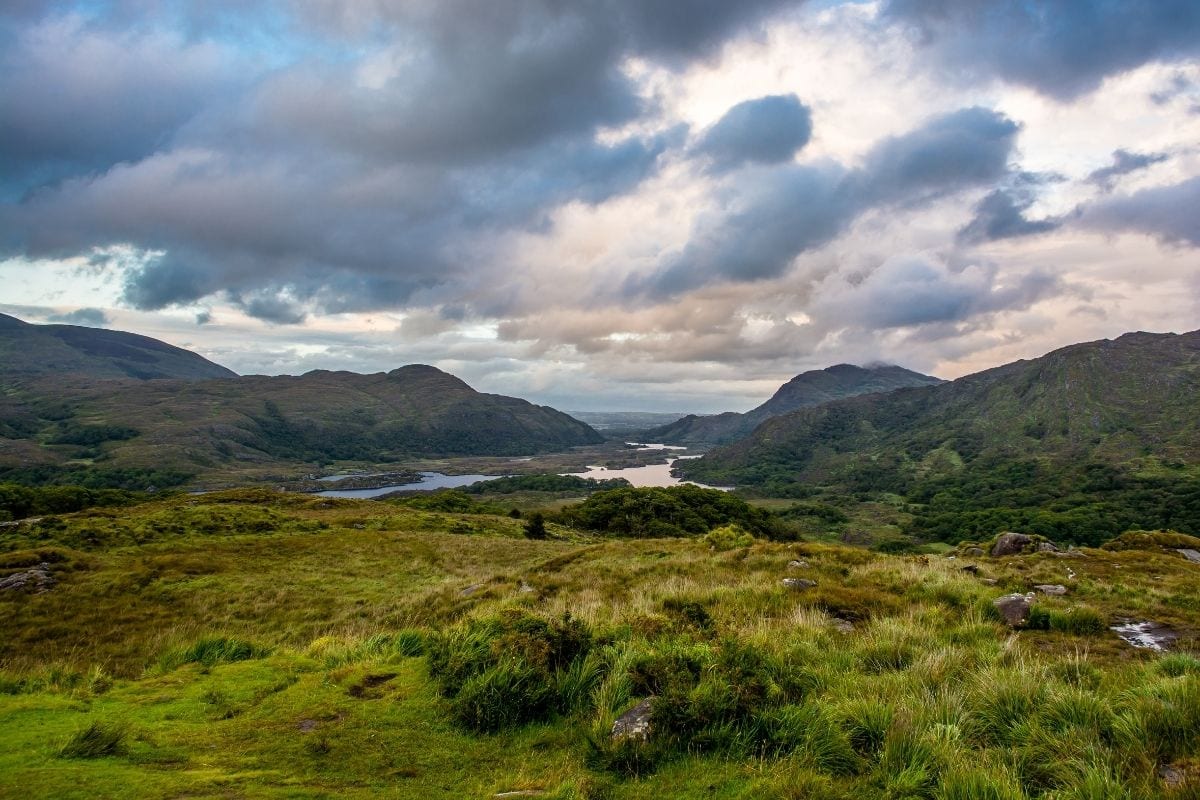
Go World Travel is reader-supported and may earn a commission from purchases made through links in this piece.
Present in every culture throughout the world, folklore consists of the traditions, customs and heritage of different lands.
These lands are made up of different communities with variations in aspects of folklore such as music, dance and crafts.
In Celtic and traditional Irish folklore, landscape plays an extremely important role. Each region of Ireland contains its own unique landscape. For example, the Giant’s Causeway in Northern Ireland, the forests and mountains of southeast Ireland, and the lakes and bogs of the Irish midlands.
Landscape is integral to the development and preservation of many aspects of folklore such as myth, occupation and use of the land.
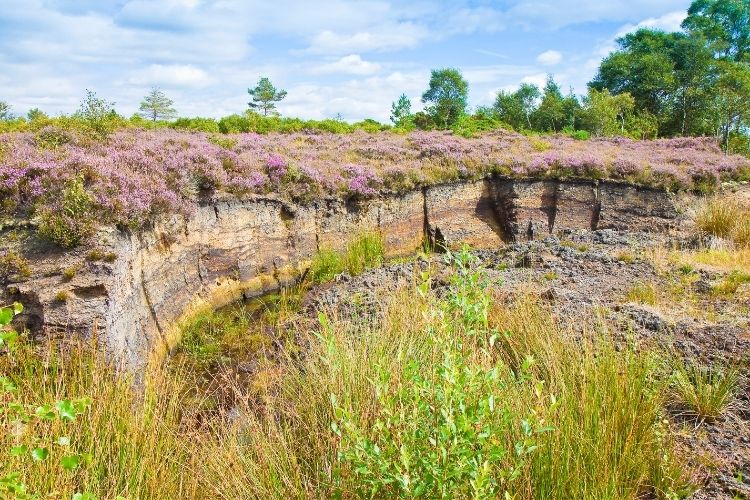
Bog Lands in Irish Folklore
The two types of bogs – raised and blanket – are found in many parts of Ireland but are most common in the midlands. Blanket bogs can be found in areas where there are hills and mountains. Raised bogs are found along vast stretches of flat land.
Traditions and culture involving harvesting, preservation and restoration became closely associated with bogland folklore throughout the Irish midlands.
A good relationship between people and landscape was essential if a good harvest of turf was to be gained.
Work on the bog has involved generations of families harvesting peat and taking care of the beloved bog lands. Harvesting peat, whether by traditional or modern methods, requires community and family effort. Each individual plays their own important role in harvesting their vital source of fuel.
In times past, turf would be cut and harvested by hand using a slane. The turf cutter would use this vital tool, usually made by a local blacksmith or ironsmith, to cut the turf. Another person would place the turf blocks onto the bog bank.
A third person would pile them into baskets or onto a cart. Carts were then transported by horses or donkeys and could easily travel along laneways and bumpy roads.
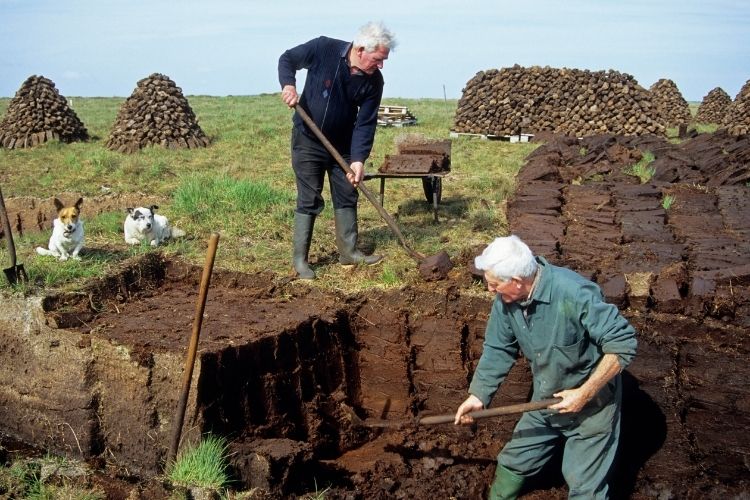
Strengthening Bonds
The three workers formed a sacred triad and often helped to strengthen family bonds. Furthermore, work on the bog involved community effort in areas of communal peatland. Blocks of turf would be placed in long lines by many people.
The newly harvested black and dark brown peat would be placed in tower formation on the ground or in small clusters.
Finally, the harvest would be left out in the open throughout the rest of summer or covered over if there was heavy rain.
Many people from the midlands, northwest and west of Ireland have fond memories of growing up near bogs and working on them each summer. Older generations would spend most of the day on the bog, especially throughout the summer, and would have their meals there.
Open fires were often present where tea was brewed and pots of stew prepared. Cold tea was a much favoured drink that brought refreshment to workers on the bog.
In traditional folklore, it is recounted that small ethereal flames could be seen around the bog at night. Particularly at times of high energy such as mid-summer. In contemporary times much turf is harvested using modern machinery.
Old laneways have become overgrown with briars and hedges and the roads are now modern and fast-paced. Many projects have been created to work towards the preservation and restoration of boglands.
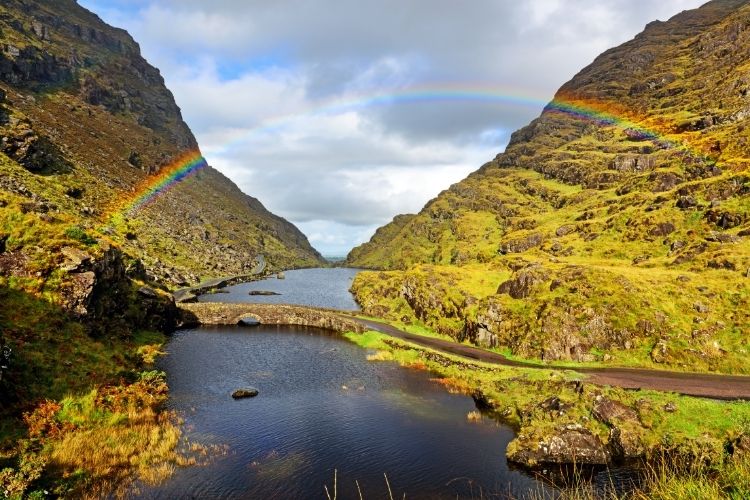
Lake Lands in Irish Folklore
The midlands of Ireland are also known as the lake lands of Ireland due to the wide variety of lakes throughout the landscape. These lakes are an important part of Irish heritage and folklore. For many years they have been a source of food, freshwater and a way of transport.
In addition, many of these lakes are strongly associated with myth and legend. For example, Lough Derravaragh in County Westmeath – The Children of Lir.
Other lakes, such as Lough Ree in County Longford, are home to islands where monasteries were founded many years ago.
In contemporary times many of the lakes are popular fishing locations on and around the edges of the water. Lakes such as Lough Boora in County Offaly are surrounded by pristine bog lands and a diverse range of flora and fauna.
In times past, particularly before the arrival of modern transport and technology, lakes were an important part of travel. Turf harvesting and cutting folk would transport their turf and other goods across the lakes in boats known as cots.
The lakes provided people with an alternative and vital area of transportation. Particularly in areas of bog land or wild landscape which were difficult to gain access to.
Some of the larger lakes allowed for travel from one part of a village or town to another. They were an important source of fishing for crannogs, trout and crayfish.
Fish was often forgotten about as a source of food for people who lived far away from coastlines. While crops of potatoes and vegetables were more common as a food source, fish provided people with sustenance in times of scarcity serving as an alternative healthy dietary supplement.
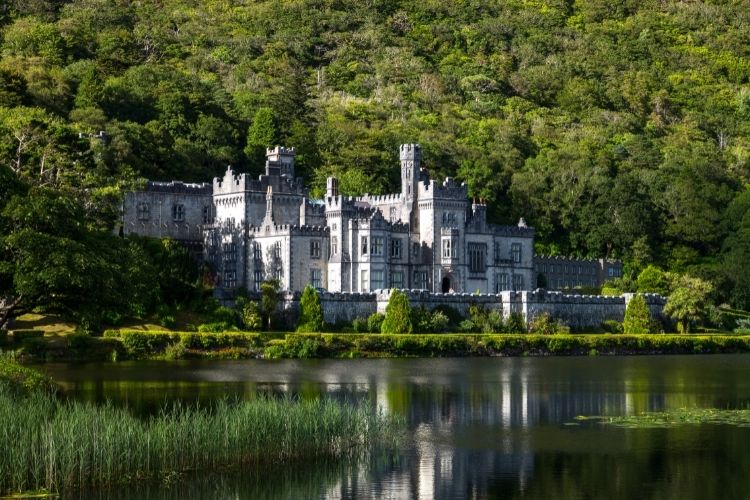
Mysteries of the Lakes
Playing an important role in Celtic folklore, lakes are looked to as a source of mystery, the unknown and unseen. Many castles were built near lakes or rivers throughout the land where fresh water was easily accessible.
Lakes such as Lough Ree in County Westmeath and Dring lake in County Longford contain islands rich in history and heritage.
There is also a tradition of garden folklore associated with lakes in the Irish midlands such as Masslough lake and Gill’s lough in Heywood Gardens, County Laois. Other lakes, such as Lough Forbes in County Roscommon, have become associated with Greenland white-fronted geese.
Thus, making it an important location for diverse wildlife. In addition to being a source of fishing and boating, lakes provide activities such as swimming, exploring surrounding forests and hidden trails plus camping along the shores.
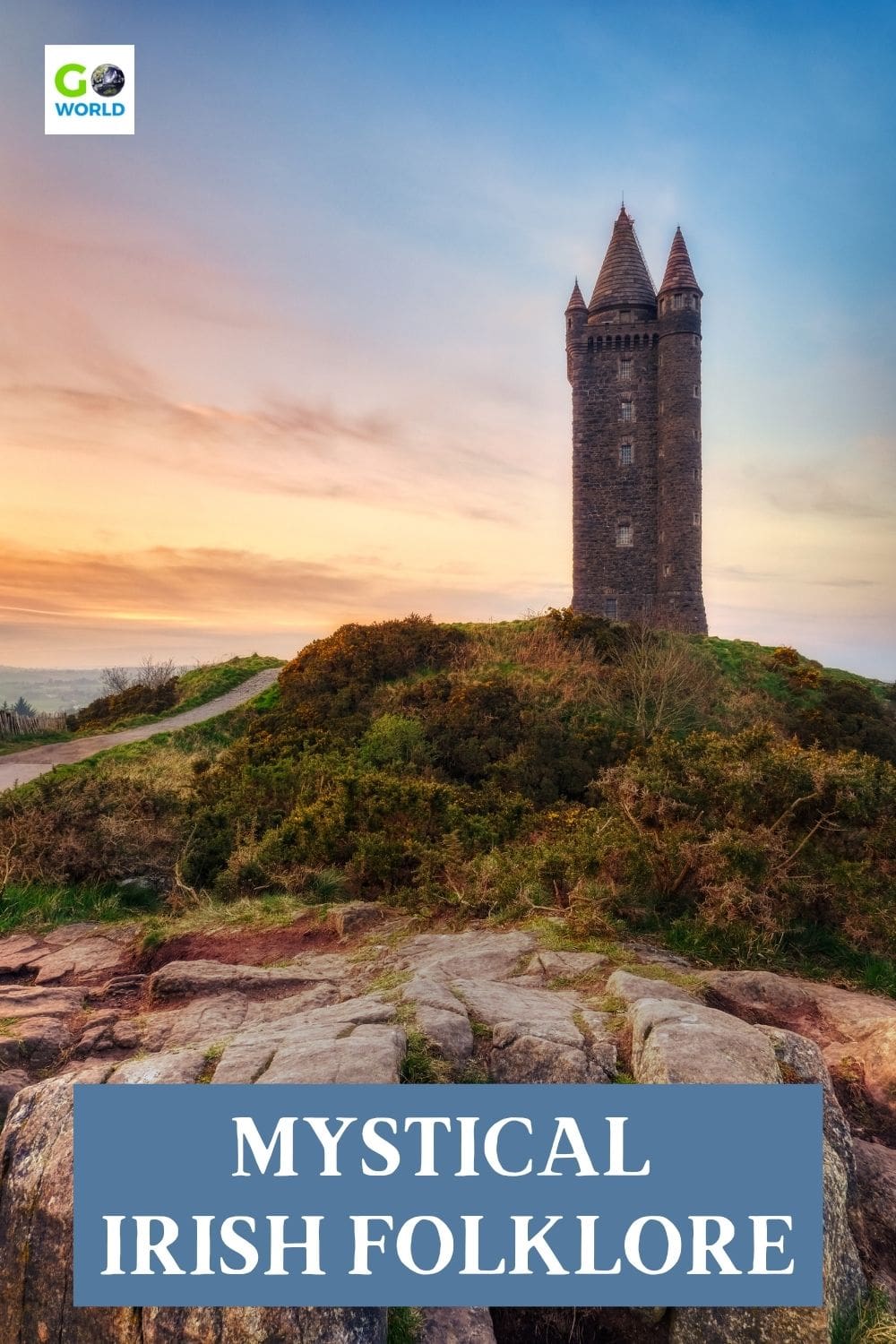
The origins of lakes are a point of interest in heritage and folklore associated with landscape. Lakes can be natural or man-made. Many different types of trees, plants and herbs are to be found by lake shores or close by in areas of woodland or pasture land.
Clusters of dark green reeds are home to many birds and the sight of swans is always an appreciated part of any lake visit. Many lakes are surrounded by trackways, woodland and mountains such as Brittas lake at the foothills of the Slieve Bloom mountains in County Laois.
Other lakes such as Lough Owel in County Westmeath are associated with historical houses such as Belvedere House and Gardens.
A visit to the lakes of the Irish midlands has always provided a wealth of experience – nature, folklore and heritage.
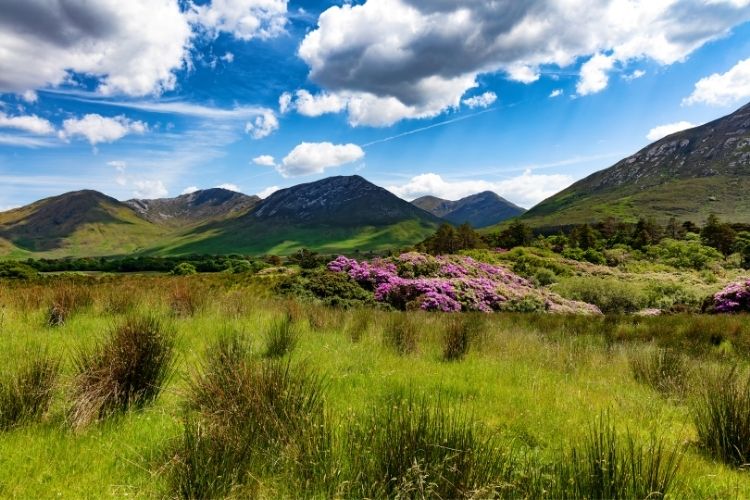
Hills and Mountains in Irish Folklore
Hills and mountains are integral features of the landscape in traditional Irish heritage and folklore. They are places containing land both wild and cultivated.
Sometimes visible in the distance, at other times unreachable and inaccessible. They have always had a strong connection with myth, legend and elements of the supernatural.
Mysterious physical aspects of the mythical and Faery realms have been present on hills and mountains for hundreds of years. Amongst these features are Faery forts, trees, circles of trees and rocks, standing stones and even ancient burial sites.
Hills and mountains are deeply connected with the Otherworld – mounds, tunnels within mounds and portals.
Every region of Ireland has its own range of hills and mountains and this includes the midlands of Ireland steeped in unique cultural heritage.
One of the most popular and well-known hills located in the Irish midlands is the Hill of Uisneach near the towns of Mullingar and Athlone in County Westmeath.
Every year, at the beginning of May, a major fire festival takes place on the hill attracting thousands of visitors. The festival celebrates the arrival of the first month of summer – mi na Bealtaine.
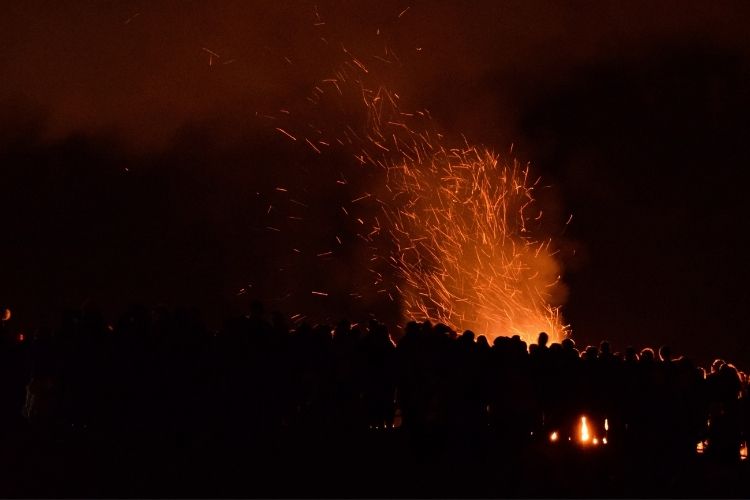
Fire Festival
In addition, it pays homage to St. Brigid and the goddess aspect of the landscape. A most remarkable and memorable sight, the large fir lit on the top of the hill can be seen for many miles. It is also reciprocated by a circle of smaller fires in the distance.
The hill is associated with many pivotal figures of Celtic myth and legend such as Eriu, Lugh and the Tuatha De Danann.
It is believed that the hill contains the mythical source of the River Boyne and that St. Patrick built a ‘new church’ there in the fifth century.
According to folklore and legend, an extinct volcano is said to dwell deep within the Hill of Croghan in County Offaly. Known as Bri Eile it has become an area of sacred space in the landscape, just like the Hill of Uisneach.
In the nearby bogs, ancient bog bodies were found associated with a darker aspect of Celtic history known as sacrificial or ritual killings.
One of the most well-known of these is Old Croghan man. His remains were found preserved in a bog and become the subject of much debate and speculation.
County Longford is home to Cairn/Corn Hill, Slieve Golry and Bri Leith near the historic quaint village of Ardagh. Irish myth tells how the De Dannan Faery prince Midir once dwelt here and the hill has become associated with many Celtic-themed tales of love and legend.
The most well-known mountains in the Irish midlands are the Slieve Blooms on the Laois/Offaly border. Scattered throughout this unique mountain range are mystical waterfalls, enchanting walkways and scenic glens. Smaller, lesser-known hills include the Forest Hill of Mullaghmeen where Lord Gradwell once owned a farm.
Also, Strawberry Hill where once stood a grand gothic house in the 1800s. Hills such as Curlew Mountain and Seltannasaggart in County Roscommon are an important part of Irish folklore as they are associated with people and animals – being named by them and after them.
Another important feature in folklore is that of the booley hut. These were small stone huts built by shepherds and farmers to stay during summer while their livestock grazed on the hill.
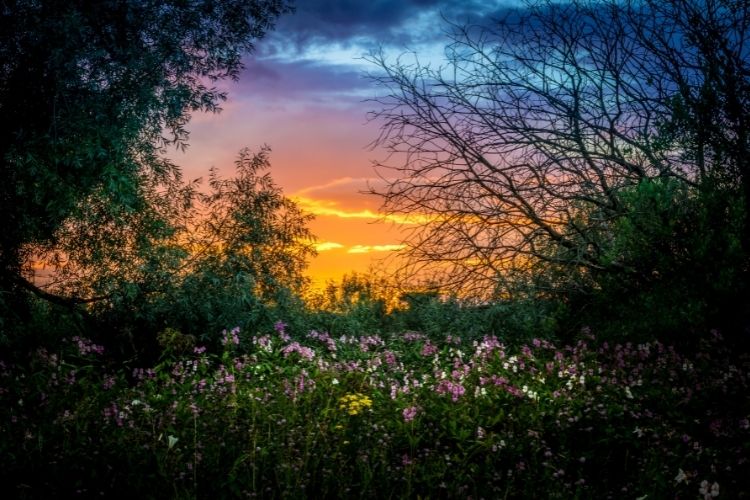
Faery and Noble Folk in Irish Folklore
The island of Ireland has a strong tradition and wealth of knowledge about the Faery and Noble folk. Belief or disbelief in the supernatural, in saints and in scholars has always been an important part of Celtic folklore.
Each region, and indeed each county, of Ireland has its own unique representations of the Faery realms. As the worlds of Faery, saints and the supernatural are closely connected to the Irish landscape particular figures and myths became associated with particular counties and regions.
Many historical figures and legends formed close connections with specific parts of the country. For example, St. Brigid and Kildare, St. Kevin and Glendalough, St. Finbarr and Cork.
Folklore and history associated with saints and noteworthy figures had beginnings in pre-church times. The arrival of Christianity to Ireland and the growth of the church adopted and adapted many aspects of Celtic folklore.
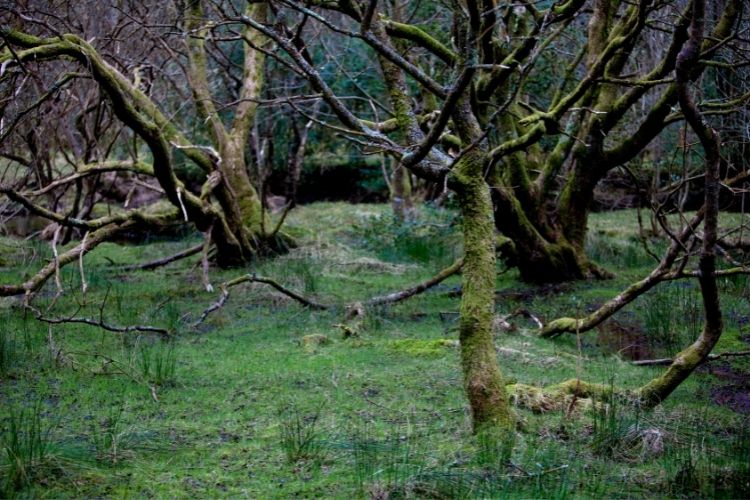
Druids, Saints and Faery Trees
The midlands of Ireland possess a unique and rich heritage of Faery and folklore. One of the most well-known historical sites in the Irish midlands is the Hill of Uisneach in County Westmeath. It is historically and mythically connected to figures such as the god Lugh, goddess Eriu, saints such as St. Patrick and St. Brigid.
It is also associated with the Banshee (old Faery woman) and the Tuatha De Danann. This is a supernatural race similar to humans in appearance who retreated to hills, cairns and mounds after a battle with the Gaels.
Many of the Faery and supernatural folk formed important relationships with aspects of wild landscape. In particular hills, trees and underground portals. To this day it is believed to be extremely unlucky to cause harm to any part of the landscape especially Faery trees.
The Faery and Noble folk have an important role to play in the history of particular places and landmarks. In County Offaly, there is much folklore associated with St. Ciaran, the Fey folk of Rathmore and the spirits of Leap castle.
St. Ciaran is believed to have founded a church near Clonmacnoise and is an important figure in its history. Myth and legend connected to Leap castle tell how the lady of the castle – An Cailin Rua, The Red Lady – was attacked and murdered. A ghost carrying a blade is said to roam about the castle.
In County Laois the Slieve Bloom mountains are associated with the Sidhe–Faery folk as is the mound of Mountrath and the Fey island of Lough Duff. The noble figures of Diarmuid, Grainne and Fionn Mac Cumhaill are associated with portal tombs and dolmans in County Longford.
Faery folklore and heritage of County Roscommon feature Saints Midabaria and St. Brigid. Both of these saints are associated with the season of spring, the practice of healing and passing on knowledge. The Faery folk are also important, most notably the Furety Fey.
In County Leitrim, there is important folklore associated with St. Molaise – patron of the Meehan clan. His feast day is believed to fall on August 15th and it is said that he could make water appear from rocks and he had a great awareness of want and need.
In Irish myth and legend, all of the Faery and Noble folk have a rich heritage deeply connected to the landscape and the inhabitants of that landscape.
The Faery and Noble folk play a vital role in folklore, history and heritage throughout all of Ireland. The Irish midlands – the heartland of Ireland – is home to so much of this sacred history.
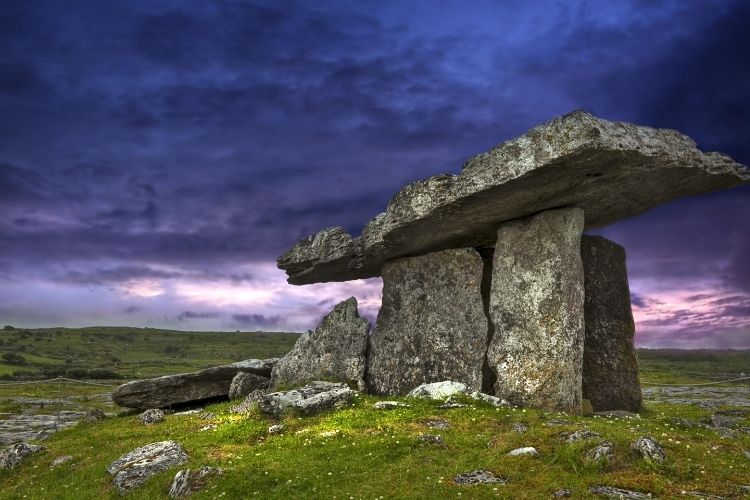
Sacred Sites in Irish Folklore
There are countless numbers of sacred sites throughout Ireland. These include monastery ruins, castles, graveyards, wells, round towers and features of the landscape associated with the Faery and noble folk.
Many of these sacred sites are natural parts of the landscape such as hills and forts. Others have been formed or built by human hands such as round towers and monastic sites.
Graveyards are also regarded as sacred sites as they contain the remains of ancestors who died in severe and tragic events such as crop blight, religious institutional power and wars.
Celtic folklore, beliefs and practices consider all aspects of the land as being sacred and to this day most people consider it unlucky to build on or harm any part of the land connected to the Faery realm. Every province in Ireland has its own unique sacred sites with a wide variety of these located throughout the midlands.
Some of the most well-known sacred sites in County Westmeath include St. Brigid’s Well, the Hill of Uisneach and Hare Island at the southern end of Lough Ree. There are two wells associated with St. Brigid. One is by a serene fish farm on the outskirts of the town of Mullingar.
The other is adjacent to the Hill of Uisneach. Both locations are filled with immense spirituality and ancient powers connected to the element of water.
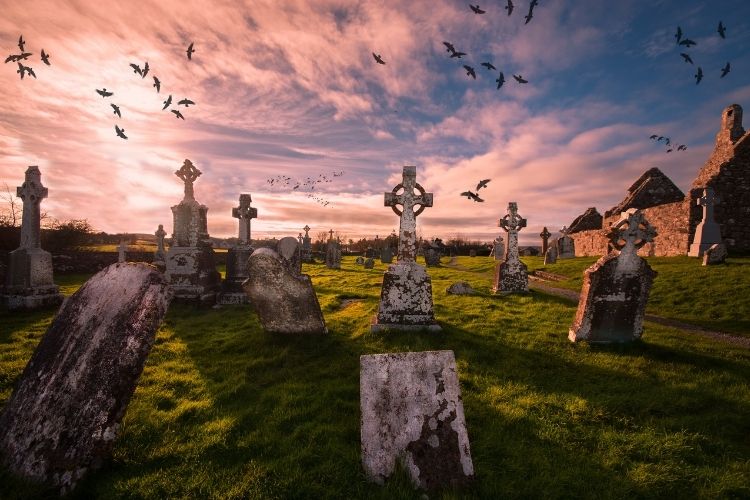
Hill of Uisneach
The Hill of Uisneach has a significant legacy of connection with the Faery and mythological realms and is one of the most powerful heritage sites in Ireland.
On mystical Hare Island, St. Ciaran is believed to have established a monastery in the 6th century before later establishing Clonmacnoise in County Offaly. Viking gold was discovered on Hare Island in the 1800s and contains the ruins of an old Gothic House owned by the Hancock family in the 1650s.
County Longford is home to an interesting and quaint clock tower located in Ardagh village. This historic village is also said to contain the original ruins of St. Mel’s Cathedral in Longford town. Legend records how St. Brigid met St. Mel near Ardagh and wherever they preached new springs of sacred water emerged.
A magical Faery tree grows proudly near the village where the spirit of Sweeney the Piper is believed to dwell. Should the tree ever fall it is believed that death may follow. Ardagh also contains sacred church ruins founded by St. Mel – a contemporary of St. Brigid and St. Patrick.
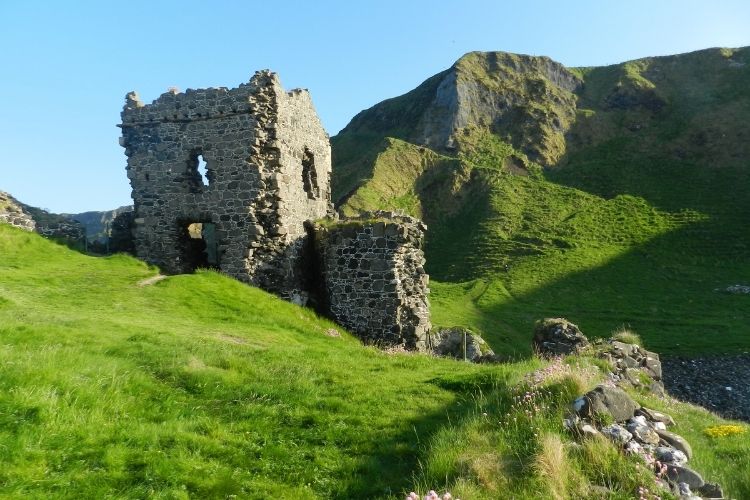
Ruins and Graveyards
The sacred site of Clonmacnoise – founded by St. Ciaran in the 6th century – is located in County Offaly. It was once a vital centre for crafts, trade and education.
The monastic site ruins contain a cathedral, graveyards, churches, round tower and crosses. Legend says that one of the high kings of Ireland, Rory O’ Connor, was buried there in 915 AD.
County Offaly is also home to Lynally Castle and ruins – an ecclestical site founded by St. Colman in 590 AD. The historic Rock of Dunamase is located in County Laois and has scenic views of O‘ Moore’s valley.
This sacred site overlooks a legendary landscape associated with the mythical King of Leinster Diarmuid Mac Murrough and his daughter Aoife.
The sacred site of Keadew is located in County Roscommon. It contains a well, altar and stone and was founded by St. Lassir.
Roscommon is also home to the Athleague yew tree, a much loved sacred site containing healing springs from limestone, a well and an altar.
Located in County Leitrim is an ancient monastic site called the Monastery of Mohill founded by St. Manchan. Each sacred site in the midlands of Ireland possesses its own distinct heritage often connected with lost landscape folklore.
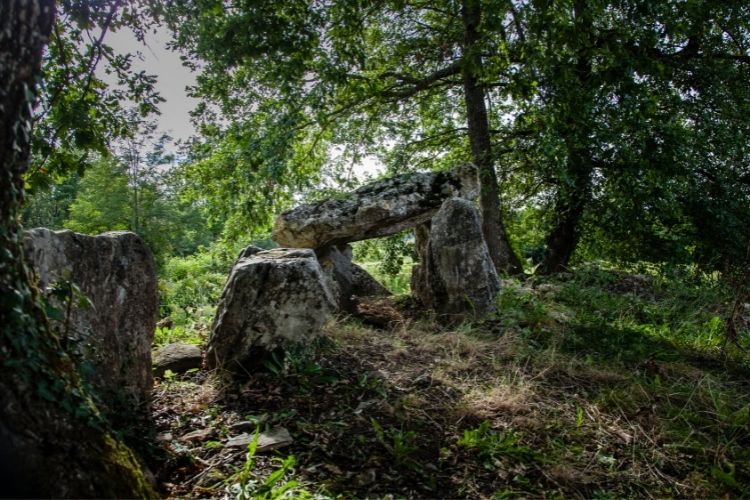
Lost Landscapes in Irish Folklore
Ireland has a vast history associated with legendary and mythological landscapes. Following a rich tradition of close relationships with realms both seen and unseen, many of these lost landscapes are steeped in folklore.
These landscapes are both real and imaginary. Many of them remain hidden or have transformed into something alternative. In many instances, landscapes can dwell within landscapes or are believed to be accessed through portals deep within hill mounds, dolmans or trees.
Entire landscapes or specific features of the landscape can become lost intentionally or unintentionally. This can be through human error or unsuccessful outcomes in dealings with the supernatural folk and realms.
Landscape features such as islands, glens and raths that are physically present and accessible contain elements that have become lost to humankind such as contact with the other world.
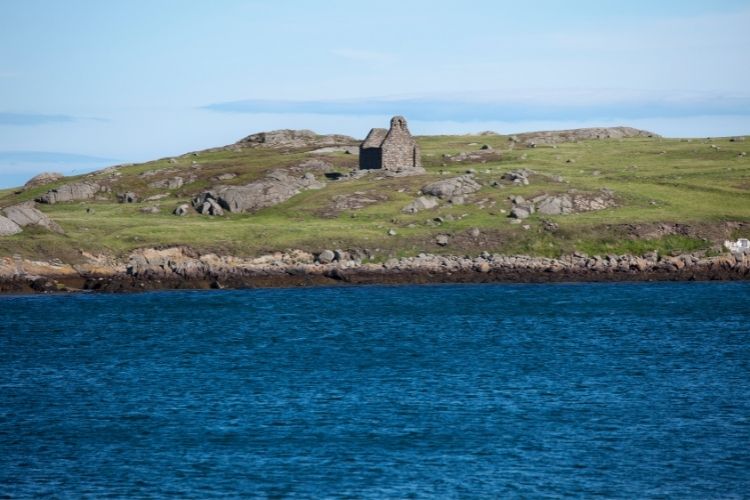
Mystical Islands
County Westmeath is home to Lough Lene and mystical islands such as Hare Island and Turgesis Island. These islands possess significant history associated with the Vikings.
Nearby Baile nag Cailleach – Collinstown – contains lost landscape associated with old hags, the crone aspect of the Celtic goddess. In addition, Roman-built log boats have been found here.
The hill of Uisneach holds much folklore and heritage connected to the druid Mide and lost landscapes such as wells, hazelnut trees, hidden mounds and standing stones. Even a mythical fifth province of Ireland known as Mide.
Throughout these lost landscapes an ancient fair known as The Fair of Tailtiu is said to have taken place every August, Lunasa, in honour of the mythical Celtic god Lugh. The stone of Divisions, Ail an Murann, was regarded as a meeting place between the earthly and otherworldly kingdoms.
Though mostly associated with County Kildare in southeast Ireland, St. Brigid plays an important role in folklore from the midlands of Ireland. Many even believe that her birthplace was at Croghan Hill in County Offaly –home to an ancient volcano.
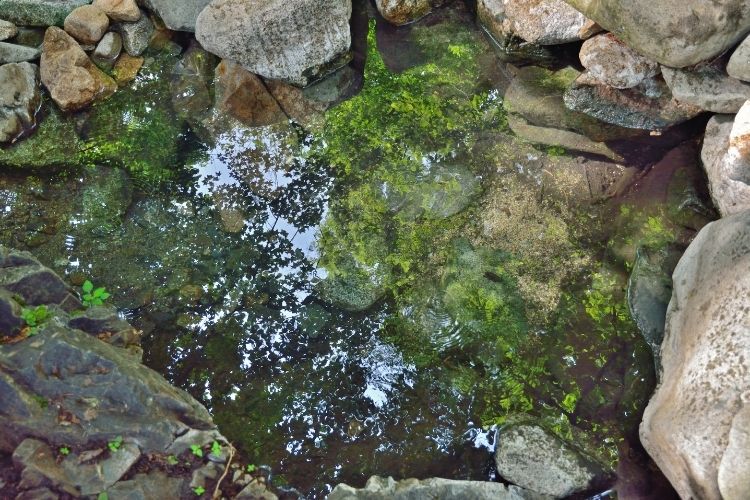
St. Brigid
St. Brigid was a kindred spirit of lost landscapes. The ‘miracle of St. Brigid’ enabled her to travel across sacred bog lands and ancient places of pilgrimage.
One of the saintly lady’s first communities is said to have been established at Croghan. It is surrounded by mystical cairns, healing springs of water and mythical mounds.
In this area lost landscape also includes the hills and mounds of Bri Eile connected to the maiden Eile and the folkloric figure Fionn Mac Cumhaill.
Present in this landscape are ancient forts dating back to 2,000 BC. Sacred ritual became part of this lost landscape as the veil of St. Brigid is believed to have been received here by St. Patrick’s nephew bishop Mac Caille.
Bri Leith is a part of the lost landscape associated with hills, located in County Longford. The ‘Bilberry Fields of Bri Leith’ became part of folklore associated with Lunasa – a time of harvest, festival and remembrance of the Celtic god Lugh. Legend tells how the high king of Ireland had ‘rights’ to these sacred fruits.
Quaker Island is situated in County Longford and contains pathways between islands, a lost landscape connected to queen Meave and her sister Lothra. Also known as the ‘island of the seven churches’ it contains an early Christian monastery founded by St. Diarmuid – mentor of St. Ciaran.
Folklore tells how it was believed that misfortune would follow if stones around the churches were ever taken. The smallest church became known as Templedermot and it was even believed that if a female entered this church death would soon follow.
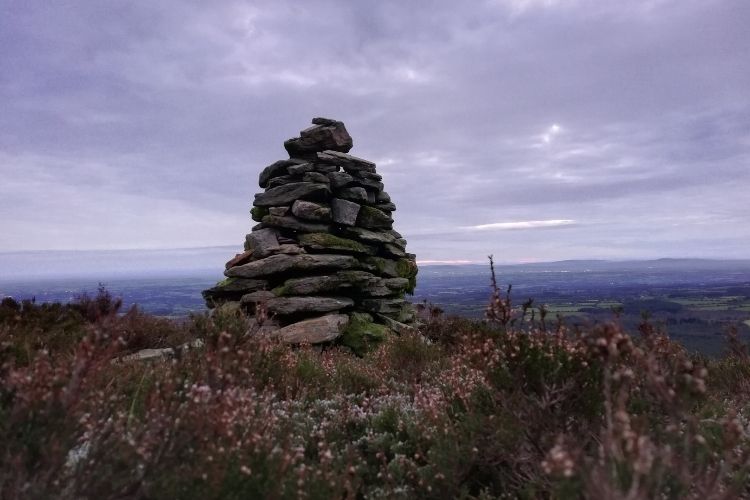
More Lost Landscapes
County Laois possesses a rich heritage associated with lost landscapes. It is home to Redcastle Rath. The Glen of Slieve Bloom is connected to subterranean tunnels, underground passages and souterrains. The Spirit of Slieve Bloom is believed to dwell within this sacred landscape.
A lesser-known early Christian monastic site is connected to the area of Kyle. Ruins of a medieval church are connected to the Bullean Stone of Kyle, Sts. Fintan and Mochra. The area of Timahoe contains mythical tombs and towers and a lost bridge to the otherworld.
Ladywell in Durrow is also associated with the Faery realm as a large hawthorn grows over the well. The space between this tree and the water is sacred lost landscape connected to the supernatural realm. Its legacy is connected to an original blue stone cross and was once a place of healing and pilgrimage.
A lost landscape known as Curlew Pass is connected to Lough Key in County Roscommon. In contemporary times a sculpture of an ancient Gaelic chieftain watches over this mystical landscape. Roscommon is also associated with mine history and heritage such as Arigna Mines (1700 – 1990).
Just like hill and mound landscape, mines have a powerful connection with the otherworldly Faery realms. Furthermore, the mines testify to the connection between humans and landscape.
A connection of interdependence and a legacy of extreme labour and survival. The lost landscapes of Sheemor and Sheebeg are connected to County Leitrim and contain a rich heritage of Faery trees, tombs and cairns.
Every lost landscape connected to the Irish midlands contains its own unique history. A journey throughout the heartland of Ireland provides each person with a rich tradition of folklore, heritage and scenic landscape.
Book This Trip
Start planning your magical Irish folklore escape today. Get prepared with knowledge on how to get around, hotel and VRBO accommodations, the best small shops, local restaurant reviews and more through TripAdvisor and Travelocity.
Plan even more fun with unique Irish lore activities, skip-the-line tickets to major attractions and expert-led tours through the most breathtaking places with GetYourGuide. Find more information and book your dates in advance here.
For exclusive flight discounts, car rental options and vacation packages, check out CheapOair.
- Life of a Champion: Exploring the Muhammad Ali Center in Louisville - April 19, 2024
- What It’s Like to Live as an Expat: Lake Chapala, Mexico - April 18, 2024
- Top 5 Spots for Stargazing in North Carolina - April 17, 2024

